Herbal anthelmintic agents:a narrative review
Manjusa Adak,Pradeep Kumar
Manjusa Adak,Pradeep Kumar,Department of Pharmaceutical Sciences and Natural Products,Central University of Punjab,Ghudda,Bathinda,Punjab 151401,India
Abstract Helminths or Parasitic worms of humans may cause chronic and sometimes deadly diseases,considered as neglected tropical diseases (NTDs) that infect around two billion people worldwide.Plants have been used as anthelmintics from ancient times.This review is a compilation of plants as source of anthelmintic drug.All information presented in this review article regarding the anthelmintic activities of plants from 2005 and has been acquired by approaching various electronic databases,including Scopus,Google scholar,Web of science and PubMed.Literature was surveyed for anthelmintic activity of plants which showed that secondary metabolites of plants like terpenes,glycosides,saponins,flavonoids,tannins and alkaloids were having anthelmintic activity.Since this review is a compilation of anthelmintic activity of plants from the year 2005,it will definitely be a fruitful study for researchers working in this field.
Keywords:helminths;helminthiasis;anthelmintics;biological products;anthelmintics
1.INTRODUCTION
Parasitic worms or helminths cause chronic and sometimes deadly diseases that have a major socio-economic impact worldwide.1In humans,the disease caused by the parasitic worms is about 14 million globally,also called neglected tropical diseases (NTD).2In agricultural animals,diseases caused by parasites led to losses of about billions of dollars per year throughout the world.3,4
Gastrointestinal nematodes (GI),such as hookworms,whipworms,and roundworms affected under 15 years most.5Approximately more than 10% of the population is infected by GI nematodes worldwide.6
As of now,no vaccines are available in the market,so,control of helminths lies on the some of effective drugs,called anthelmintics,but their inadequate use causes serious drug resistance problems worldwide,so,urgent need is there for isolating,identifying new anthelmintic drugs,7for humans,its lies on chemotherapy.8Parasitic nematodes in human are two types :intestinal nematodes and tissue or blood nematodes.9Intestinal nematodes includes -Ancylostoma duodenale,Trichuris trichiura,Ascaris lumbricoides,Enterobius vermicularis,and Strongyloides stercoralis,etc.10
Helminths lives in the GI tract of their hosts,and feed off living hosts,taking nutrients from host and causing infection/diseases and normally more prone to children,soil-transmitted schistosomiasis and helminthiasis are the most significant helminthiases,responsible for neglected tropical disesses.11,12It also causes indirect disease burden through the immune system impairment,leads to malaria,tuberculosis,or human immunodeficiency virus/acquired immunodeficiency syndrome.13
Adult parasites survive for a long time in their human host and feeds directly from the blood of their hosts,thus helminths cause iron-deficiency anemia.14Chronic helminth infections are characterized by a Type II helper T cells type response.15-19
2.HELMINTHS AND ANTHELMINTICS
Helminths cause a number of diseases in humans and animals,which are summarized in Table 1.
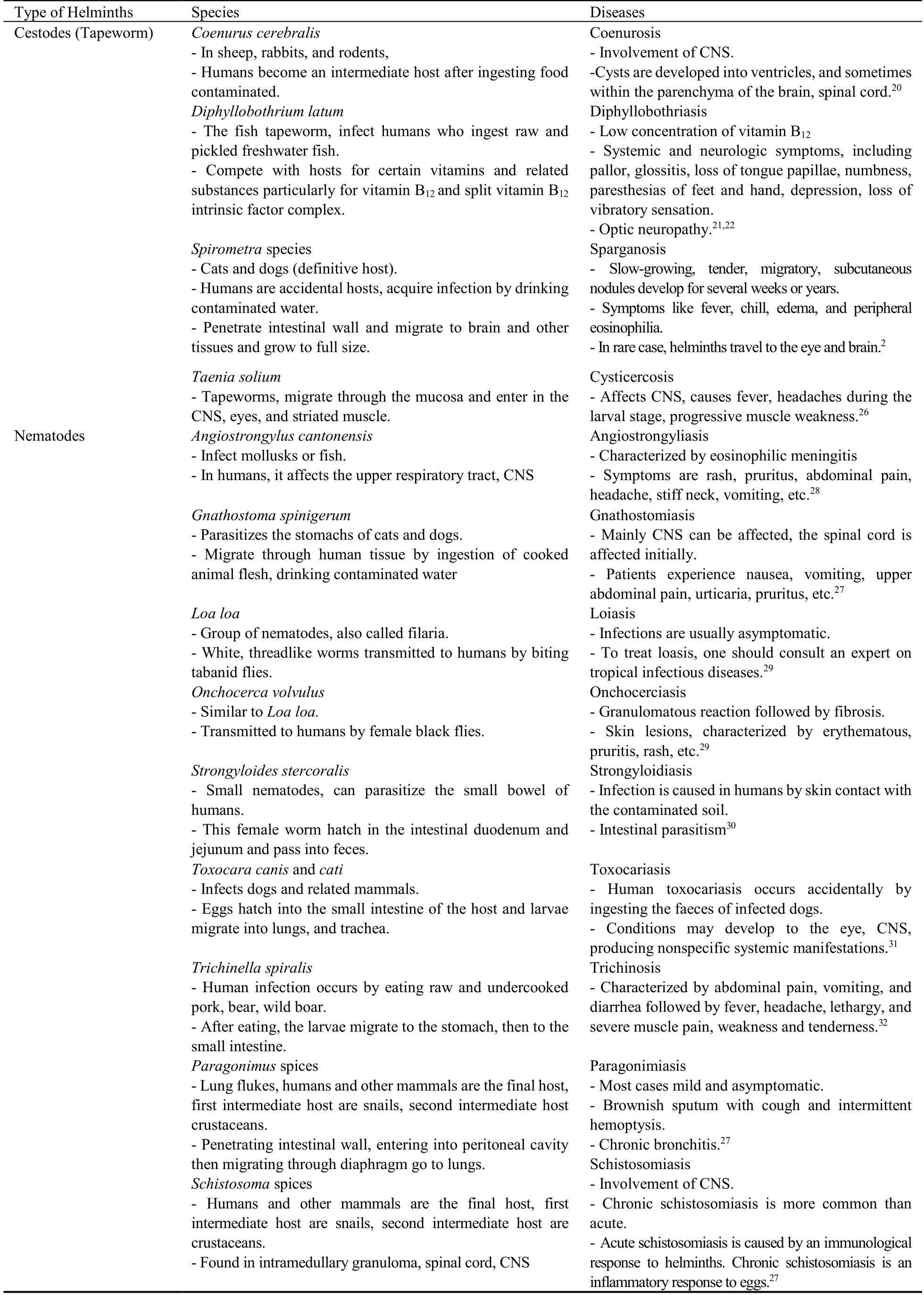
Table 1 Diseases caused by helminths
2.1.Anthelmintics
Anthelmintics,the term used for a group of drugs,used to treat several infections of humans and animals,mainly caused by parasitic worms.33
2.1.1 Secondary metabolites of plants having anthelmintic activity
Allelochemicals of plants are produced from all plants,34primary metabolites acts as precursors of different secondary metabolites.35Secondary metabolites includeing Alkaloids,Terpenes,Flavonoids,Resins and Phenolic compounds are responsible for colour,flavour,fragrance of different plant.36Terpinen-4-ol was having LC50=4.1 mM and LC90=20.2 mM.Secondary metabolites having anthelmintic activity are summarized in Figure 1.
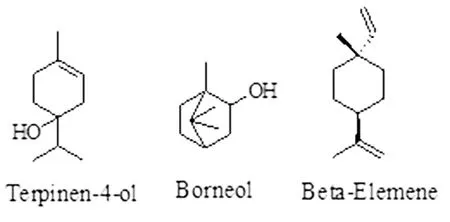
Figure 1 Secondary metabolites having anthelmintic activity
Terpenes:terpenes are the combination of different isoprene units (C5H8).36Its shows anthelmintic activities causing intestinal damage to the parasite.37Examples are terpinen-4-ol,borneol,and β-elemene showed activity againstH.contortusby inhibiting egg hatching.38Terpenes having anthelmintic activity are given in Figure 2.

Figure 2 Terpenes having anthelmintic activity
Glycosides:glycosides,have potent activity against different helminths.39,40Cardenolide causes disturbance of sodium and potassium ions transportation into helminths,thus,causing death of helminths.41Glycosides having anthelmintic activity are given in Figure 3.
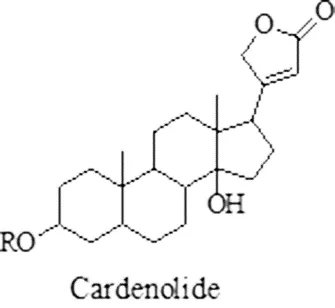
Figure 3 Glycosides having anthelmintic activity (LC50=80.4 μM)LC50:lethal concentration 50.
Saponins:saponins contains triterpene or sometimes steroidal-aglycone with sugar chains.42Saponins show their anthelmintic activity by inhibiting acety-lcholinesterase and thus cause worm paralysis leading to death.43They are reported to have inhibitory activity against animal parasitic nematodes,like-Haemonchus contortus.44β-Sitosterol was having IC50value 58 μM.Saponins having anthelmintic activity are given in Figure 4.Flavonoids:flavonoids,helps in UV protection,flower coloring,allelopathy,and auxin transport inhibition.45Flavonoidal plant,showing activity by blocking the phosphorylation reaction,thus inhibit the energy production within the parasitic worms,leading to death.46Quercetin was having paralysis time at 10 mg/mL=2.23± 4.51 min.Flavonoids having anthelmintic activity are given in Figure 5.
Tannins:tannins,water-soluble,polyphenolic group of compounds,help in the killing of nematodes,by interfering with nutrients absorption of worms from the host cell46or when the condensed tannins are ingested by larvae,the tannin binds to the intestinal mucosa of the parasitic worms and thus causes autolysis.47Epigallocatechin was having IC50value 49 μM.Tannins having anthelmintic activity are given in Figure 6.
Alkaloids:alkaloids have shown anthelmintic activity by targeting acetylcholine receptor and suppressing glucose uptake,thus helminths died due to starvation.48Dicentrine was having EC90=6.3 μg/mL and sanguinarine was having IC50=58 μM.Alkaloids having anthelmintic activity are given in Figure 7.
Non-protein amino acids:non-protein amino acid are the nitrogen-containing compounds having ammonia derivatives compounds with hydrogen atoms.They damage the parasitic worms by affecting the CNS of parasitic worms,leading to paralysis and followed to death.49Mimosine was having IC50=16.8 μM Nonprotein amino acids having anthelmintic activity are given in Figure 8.Target Sites of anthelmintics Target sites for anthelmintic are summarized in Tables 2 and 3.

Table 2 Ion-channels as target sites for anthelmintics

Table 3 Target sites for anthelmintics (other than ion-channels)
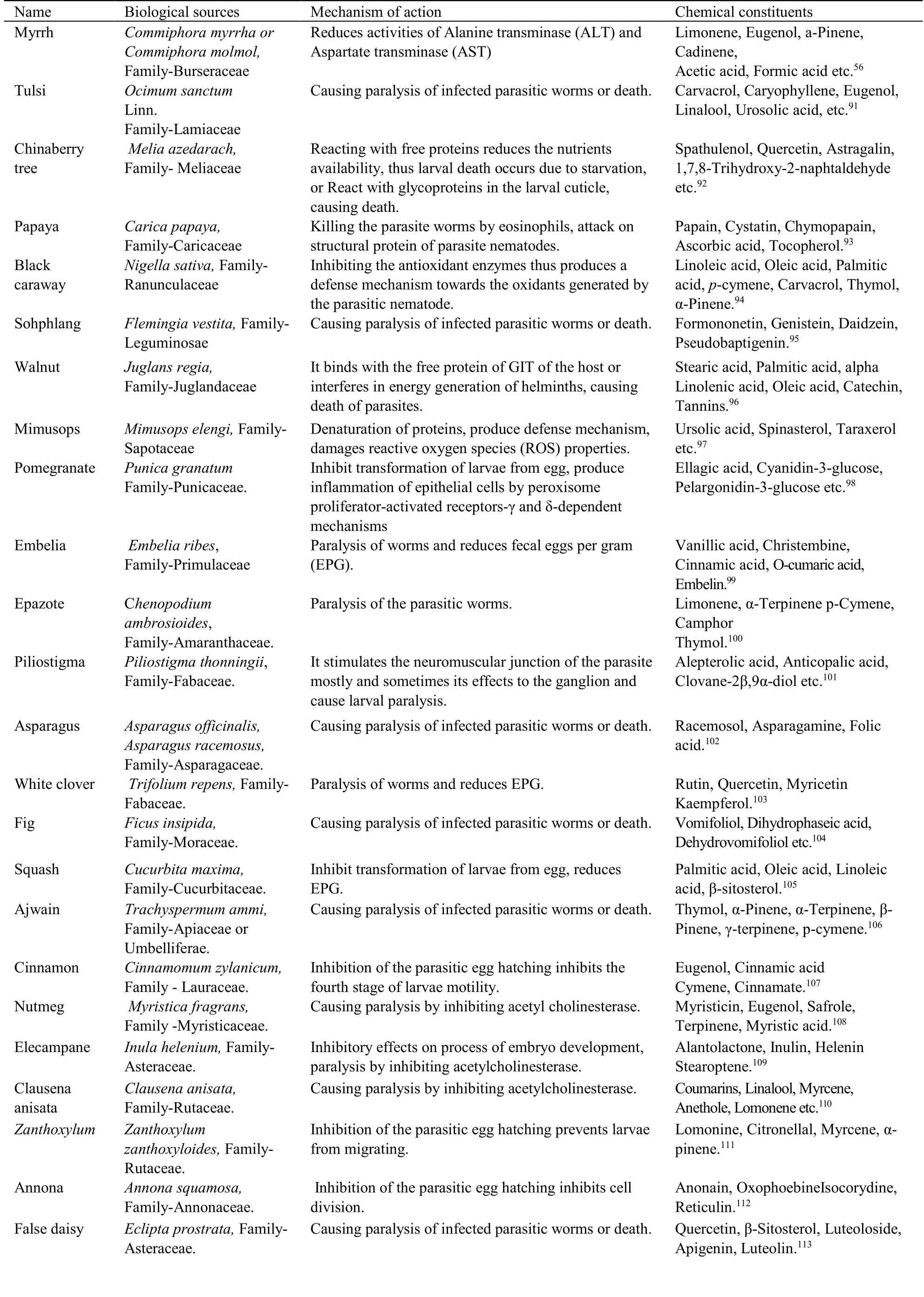
Table 4 Plants having anthelmintic activity
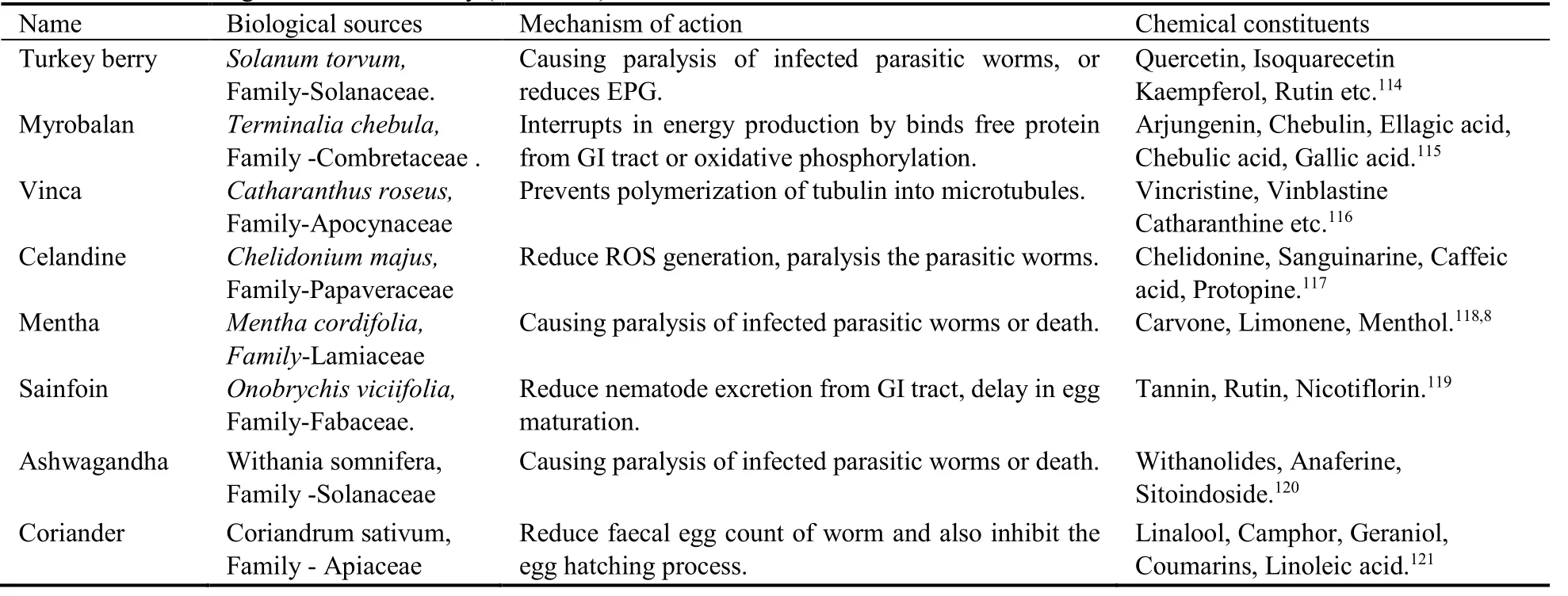
Table 4 Plants having anthelmintic activity (continued)
2.1.3 Classes of natural products having anthelmintic activity Different classes of natural products are reported to have anthelmintic activities.
Phenols:phenolic compounds contain a functional heterogenous group attached with its aromatic ring.Groups like-flavonoids,isoflavonoids and tannins are included in the phenolic compounds,45showing activity by changing the phosphatase enzyme in the helminths tegument.50
Phenols having anthelmintic activity include:
Monophenols (cresols,thymols,and carvacrol):carvacrol and thymol showed activity againstC.elegansandAscaris suum.51Monophenols having anthelmintic activity are given in Figure 9.
Benzene diols (resorcinols and catechols):gallic acid analogues,catechin-3-O-gallate and four related proanthocyanidins showed activity againstC.elegansandO.ochengi.52Benzene diols having anthelmintic activity are given in Figure 10.
Substituted benzoic acids(vanillic acids and gallic acids):showed activity against nematodeC.elegansandOnchocerca ochengi.53Substituted benzoic acids having anthelmintic activity are given in Figure 11.
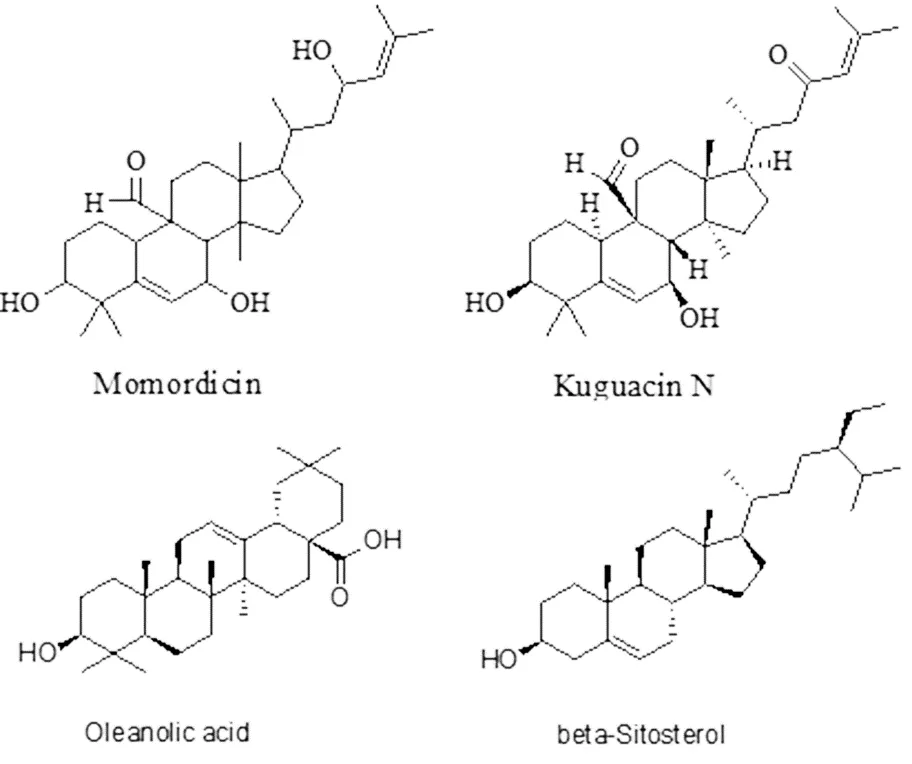
Figure 4 Saponins having anthelmintic activity

Figure 5 Flavonoids having anthelmintic activity
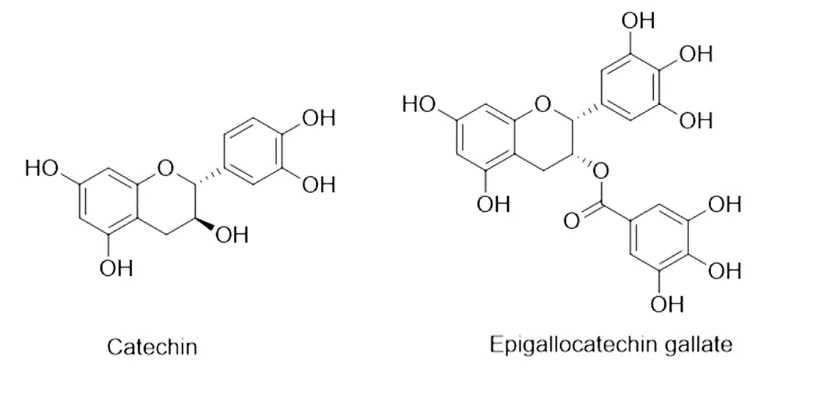
Figure 6 Tannins having anthelmintic activity
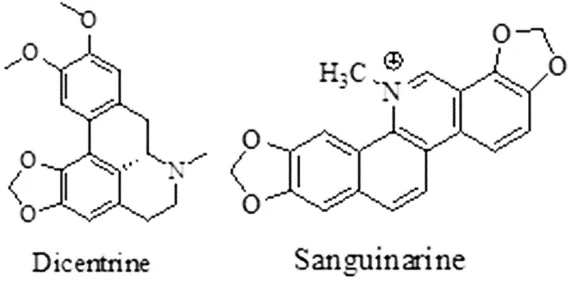
Figure 7 Alkaloids having anthelmintic activity
Cinnamic acid:cinnamic acid exhibited action by inhibiting egg hatching,example of some are p-coumaric,caffeic acid,ferulic acid,naringenin,quercetin and luteolin,procyanidins are having anthelmintic activity.53
Cinnamic acid derivatives having anthelmintic activity are given in Figure 12.Prenyl derivatives:farnesyl pyrophosphate and geranyl pyrophosphate,precursors of prenyl groups,linalool,active againstBrugia malayiandDirofilaria immitis.54Prenyl derivatives having anthelmintic activity are given in Figure 13.

Figure 8.Non-protein amino acids having anthelmintic activity
Macrocyclic Lactones:macrocycles includes macrolide and glyco lipopeptide,having anti-nematocidal activities,avermectins (Figure 14) and their aglycons are produced by soil microorganismStreptomycesspecies.55
Miscellaneous compounds:piperine fromPiper nigrumand strychnine fromStrychnos nux-vomicashowed activityagainst several helminths.Structures of piperine and strychnine are given in Figure 15.

Figure 9.Monophenols having anthelmintic activity

Figure 10 Benzene diols having anthelmintic activity
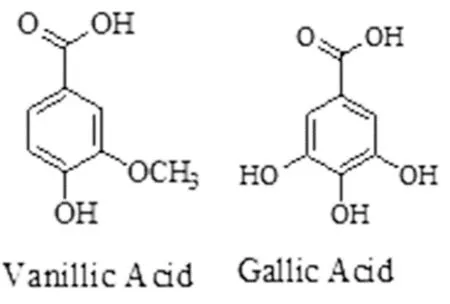
Figure 11 Substituted benzoic acids having anthelmintic activity
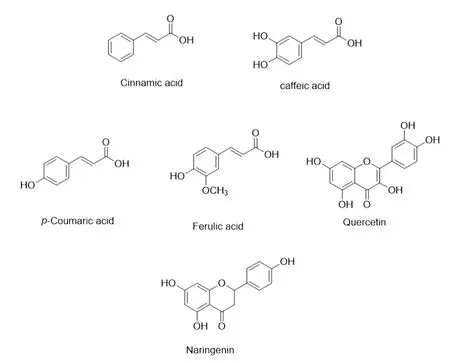
Figure 12 Cinnamic acid derivatives having anthelmintic activity
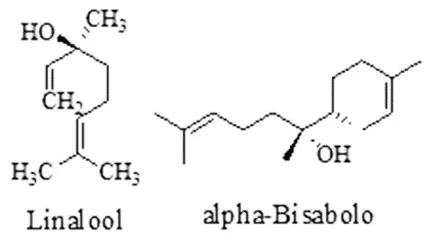
Figure 13 Prenyl derivatives having anthelmintic activity
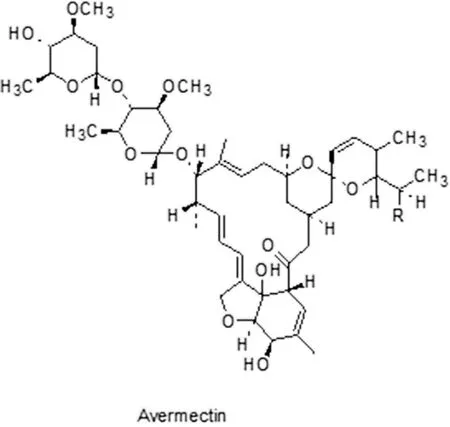
Figure 14 Macrocyclic lactone having anthelmintic activity

Figure 15 Piperine and strychinine
2.1.4 Plants having anthelmintic activity
A number of plants are reported to have anthelmintic activities.Some of them are as follows:
Commiphora molmol:there are a number of reports indicating that over 90% of humans are suffering from schistosomiasis,fascioliasis.56Myrrh was effective againstTrichinella spiralisat a dose of 0.01 mL per infective mouse (Trichinella spiralisinfective mouse),half maximal effective concentration (EC50) value forCommiphora molmolwas 0.20 mg/mL.57
Ocimum sanctum:Occimum sanctumshowed its activity at a dose of 62.15 mg/mL againstCaenorhabditis elegans.58Crude hydro-alcoholic extract was tested at dose concentration of 20 and 40 mg/mL againstPheritima posthuma.For 20 mg/mL paralysis at (6.0 ±0.5) min and death at (13.5 ± 1.2) min.59
Melia azedarach:hexane extract ofM.azedarachfruits,effective against parasites,showed a significant lethal concentration 50 (LC50) value at 572.2 μg/mL and lethal concentration 99 (LC99) value at 1137.8 μg/mL.60
Artemisia annua:the plant crude leaves extract was tested againstH.contortus,showed lowest LC99at 1.27 μg/mL in egg hatch test assay,and in the larval development test assay,showed LC99at 23.8 μg/mL.61
Carica papaya:the latex of the plantCarica papayatested againstPheretima posthuma,with different concentrations (20%,50% and 100%),at 100%concentration,it shows paralysis time,P=24.5 min and death time,D=56 min.62
Nigella sativa:ethanolic extract,tested againstCotylophoron cotylophorumat 5% concentration,it showed 81.02 % inhibition of the motility after the exposure of 8 h.63
Flemingia vestita:the isoflavones of the plantFlemingia vestitawere tested againstRallietina echinobothridawith paralysis time for glucose 6-phosphate dehydrogenase is 0.880 ± 0.006 and for pyruvate carboxylase is 9.2 ± 0.2 and for fructose 1,6-bisphosphatase is 0.98 ± 0.15.64
Juglans regia:crude acetone extract showed anthelmintic activity at 10 mg/mL,with paralysis time(52.00 ± 0.20) min and death at (114.00 ± 0.14) min.Crude methanolic extract showed its anthelmintic activity at 10 mg/mL,with paralysis time (100.00 ± 0.14)min and death at (133.00 ± 0.18) min whentested againstEicinia feotid.65
Mimusops elengi:the methanolic extract was tested againstPheretima posthuma,showing anthelmintic activity at 5 mg/mL,causing paralysis and death of the helminths at 163.3,223.2 min respectively.66
Punica granatum:the crude methanolic tested againstHaemonchus contortus,at 10 mg/mL it produced mortality atP <0.05,hatching inhibition at 0.1 mg/mL upto 49.33% and 46.33%.67
Thymus vulgaris:essential oil ofThymus vulgariswas tested againstH.contortus,90% inhibition was observed at concentrations 50 to 0.781 mg/mL,and half maximal inhibitory concentration (IC50) value was 0.436 mg/mL.97.0% larval motility inhibition observed at concentrations 50 to 3.125 mg/mL and IC50value 0.338 mg/mL.68Ferula foetida:aqueous extracts were treated againstPheretima posthuma,exhibited activity at 100 mg/mL in 6 min (caused paralysis of the worms).Aqueous extract of the plant at 25 mg/mL caused helminths paralysis in(24.00 ± 0.14) min anddeath in (56.00 ± 0.17) min.69
Embelia ribes:methanolic extracts was tested againstAscaridia galli,at a dose of 60 mg/mL it showed activity 38.67% ± 4.10% and 38.67% ± 1.86%,after 48 h of incubation.70
Vernonia anthelmintica:ethanoic extracts were tested againstHaemonchus contortus,survival rate reduced significantly at a dose conc.of 80 μg/mL.71
Chenopodium ambrosioides:the ethanolic extract was tested againstHaemonchus contortus,showed lethal effect (about 96.3%) at 40 mg/mL,after 72 h incubation72and the EC50value ofChenopodium ambrosioideswas(0.26 ± 0.02) mg/mL.73Hydro-alcoholic extract tested againstSchistosoma mansoni,larvae died at different doses after 180 min.74
Piliostigma thonningii:the ethanolic extractwas tested againstAscardia galli,showing anthelmintic activity,about 60% of larval paralysis at a dose conc.of 4.4 mg/mL within 24 h of exposure.75
Ginkgo biloba:aqueous extract of plant was tested againstS.papillosus,3.0% of plant extract solution,mortality rate of nematode larvae was 92.3% ± 2.9%,in 0.75% of plant extract solution.76Petroleum-ether extract tested againstPseudodactylogyrus,at 6.0 and 2.5 mg/L,its having median effective dose (ED50) value 2.88 and 0.72 mg/L,respectively.77
Asparagus racemosus:rhizome extract at a dose of 5 mg/ml showed mortality time (2.30 ± 0.29) h.At a dose of 10 mg/mL,plant extract showed mortality time (2.09 ±0.05) h,etc.78
Trifolium repens:aerial shoot extract tested against the tapewormHymenolepis diminutawith different compoundsi.e.1 mg/mL betulinic acid,0.50 mg/mL ursolic acid and 0.25 mg/mL biochanin A.Among them betulinic acid showed the best anthelmintic effect with a mortality time of (3.40 ± 0.66) h.79Aerial shoot extract tested againstHymenolepis diminuta,at a dose concentration of 200 and 500 mg/kg,decreased the faecal egg 47.72% and 54.59% respectively.80
Ficus insipida:The latex was tested againstColossoma macropomum gills,immobilization of the parasite occurred after 4h on treatment with 250 μL/L of latex and with 500 μL/L,immobilization occurred after 2 h.81
Cucurbita maxima:the peel extract was tested againstPheritima posthuma,at a concentration of 50 mg/mL,the paralysis time of the earthworm took place in (90± 2) min and the death time of the earthworm was (11± 2) min.82
Trachyspermum ammi:for aqueous extract,LC50value was found at 0.1698 mg/mL and for methanolic extract,LC50values was found at 0.1828 mg/mL.75The seeds extract of the plant was also tested against GIT nematodes,showed activity at a dose of 3 g/kg,the maximum reduction in egg count occurred.83
Syzygium aromaticum:the ethanolic extract,tested againstPheritma posthuma,at a dose 2.5 mg/mL,causing paralysis of the worm in (4.27 ± 0.25) min and death within (45.00 ± 2.00) min.At 5mg/mL,the paralysis in (2.43 ± 0.31) min and death occurred within(35.00 ± 4.35) min.84When tested againstCotylophoron cotylophorum,ethanolic extract at 0.5 mg/mL,showing motility (86.27%) after 8 h of treatment.85
Trichilia claussenii:anthelmintic activity of the plantTrichilia clausseniiwas studied against gastrointestinal nematodes,methanol extract of leaves showed a significant LC50value at 263.8 μg/mL and LC99value at 522.5 μg/mL.86
Withania somnifera:crude extracted hydro-alcoholic solution tested againstPheritima posthumaat dose concentration of 20 and 40 mg/mL,paralysis was shown in (6.5 ± 0.5) min and (2.8 ± 0.8) min and death occurred(13.9 ± 1.2) min and (7.1 ± 0.9) min respectively.87
Pleurospermum amabile:the crude methanolic extract when tested against whipworms and blood flukes,bergapten showed an IC50value 8.6 μg/mL againstS.mansoniand 10.6 μg/mL againstT.muris.88
Macleaya cordata:the crude extract when treated againstToxocara canis,Sanguinarine was showed IC50value 58 μΜ after 24 h.89
Ajania nubigena:the crude extract was tested againstTrichuris muris.Linalool and Luteolin were showed IC50value 20.4 μg/mL and 9.7 μg/mL,respectively after 12 h.89Leucaena leucocephala:the crude extract was tested againstC.elegans.Mimosine was showed an IC50value 16.8 μΜ after 24 h.89The EC50 valuecotyledon extract was 0.48 mg mL–1and seed extracts showed EC50 value 0.33 mg/mL.90
Warburgia ugandensis:the crude extract was tested againstC.elegans,Mimosine showed mortality after 24 h with IC50value (70.1 ± 17.5) μΜ against.89Plants having anthelmintic activity are summarized in Table 4.
3.CONCLUSIONS
A number of plants/extracts are reported to have anthelmintic activity.Most of the studies reportedin vitroactivity and only a few studies reportin vivoactivity.So,more research is needed to investigate the molecular mechanism of action of the reported anthelmintic plants/extracts as well as there is a need to either modify existing anthelmintic agents or explore new molecular targets to get next generation anthelmintic agents.
3.1.Future perspectives
Now a days novel anthelmintic targets like lysine deacetylases,lysine deacetylases,KDAC inhibitors,kinase inhibitors are explored.Modification of chemical structure and combination of known anthelmintics is also one of the ways to combat this challenge.Drug repurposing is also an emerging trend in anthelmintic drug discoverye.g.trichlorfon,a broad-spectrum organophosphorus insecticide has recently proved as anthelmintic agent.
4.REFERENCES
1.Fenwick A.The global burden of neglected tropical diseases.J Public Health 2012;126:233-6.
2.Hotez PJ,Bottazzi ME,Strych U.New vaccines for the world's poorest people.Annu Rev Med 2016;67:405-17.
3.Knox M,Besier R,Le LJ.Novel approaches to the control of helminth parasites of livestock.Foreword.Vet Parasitol 2012;186:1-1.
4.Stepek G,Behnke JM,Buttle DJ,et al.Natural plant cysteine proteinases as anthelmintics? Trends Parasitol 2004;20:322-7.
5.Kappus KD,Lundgren Jr RG,Juranek DD,et al.Intestinal parasitism in the United States:Update on a continuing problem.Am J Trop Med Hyg 1994;50:705-13.
6.Sharpe C,Thornton DJ,Grencis RK.A sticky end for gastrointestinal helminths;the role of the mucus barrier.Parasite Immunol 2018;40:e12517.
7.Preston S,Jiao Y,Baell JB,et al.Screening of the ‘Open Scaffolds’collection from compounds Australia identifies a new chemical entity with anthelmintic activities against different developmental stages of the barber's pole worm and other parasitic nematodes.Int J Parasitol 2017;7:286-94.
8.Liu M,Panda SK,Luyten W.Plant-based natural products for the discovery and development of novel anthelmintics against nematodes.Biomolecules 2020;10:426.
9.Hu Y,Georghiou SB,Kelleher AJ,et al.Bacillus thuringiensis Cry5B protein is highly efficacious as a single-dose therapy against an intestinal roundworm infection in mice.PLoS Negl Trop Dis 2010;4:e614.
10.Bogitsh BJ,Carter CE,Oeltmann TN.Intestinal Nematodes.In:Human parasitology.5th ed.Massachusetts:Academic Press,2019:277-311.
11.Hotez PJ.Neglected parasitic infections and poverty in the United States.PLoS Negl Trop Dis 2014;8:e3012.
12.Brooker S,Kabatereine N,Gyapong J,et al.Rapid mapping of schistosomiasis and other neglected tropical diseases in the context of integrated control programmes in Africa.Parasitol 2009;136:1707-18.
13.Geary TG,Chibale K,Abegaz B,et al.A new approach for anthelmintic discovery for humans.Trends Parasitol 2012;28:176-81.
14.Minciullo P,Cascio A,David A,et al.Anaphylaxis caused by helminths:review of the literature.Eur Rev Med Pharmacol Sci 2012;16:1513-8.
15.van Riet E,Hartgers FC,Yazdanbakhsh M.Chronic helminth infections induce immunomodulation:Consequences and mechanisms.J Immunobiol 2007;212:475-90.
16.Kaewkes S.Taxonomy and biology of liver flukes.Acta Tropica 2003;88:177-86.
17.Tsai IJ,Zarowiecki M,Holroyd N,et al.The genomes of four tapeworm species reveal adaptations to parasitism.Nature 2013;496:57-63.
18.Traversa D.Pet roundworms and hookworms:a continuing need for global worming.Parasit Vectors 2012;5:91.
19.Bethony J,Brooker S,Albonico M,et al.Soil-transmitted helminth infections:ascariasis,trichuriasis,and hookworm.Lancet 2006;367:1521-32.
20.Sabattani S,Marliani AF,Roncaroli F,et al.Cerebral coenurosis:case illustration.J Neurosurg 2004;100:964.
21.Marcial-Rojas RA.Pathology of protozoal and helminthic diseases,with clinical correlation.Baltimore: Williams &Wilkins Co.Edinburgh:Churchill Livingstone;1971:698-710.
22.Ohnishi K,Murata M.Single dose treatment with praziquantel for human diphyllobothrium nihonkaiense infections.Trans R Soc Trop Med Hyg 1993;87:482-3.
23.G?k?ek C,Bayar N,Buharal Z.Total removal of an unruptured orbital hydatid cyst.Can J Ophthalmol 2001;36:218-20.
24.Demir K,Karsli A,Kaya T,et al.Cerebral hydatid cysts:CT findings.Neuroradiol J 1991;33:22-4.
25.Botterel F,Bourée P.Ocular sparganosis:a case report.J Travel Med 2003;10:245-6.
26.Pushker N,Bajaj MS,Betharia SM.Orbital and adnexal cysticercosis.Clin Exp Ophthalmol 2002;30:322-33.
27.Hughes A,Biggs B.Parasitic worms of the central nervous system:An Australian perspective.Intern Med J 2002;32:541-53.
28.Niu M,Duma R.Meningitis due to protozoa and helminths.Infect Dis Clin North Am 1990;4:809-41.
29.Remme J,Boatin B,Boussinesq M.Helminthic diseases:onchocerciasis and loiasis.In:Quah SR,Cockerham WC,editors.International encyclopedia of public health.2nd ed.Washington,DC:Academic Press;2017:576–87.
30.Marti H,Haji HJ,Savioli L,et al.A comparative trial of a singledose ivermectin versus three days of albendazole for treatment of Strongyloides stercoralis and other soil-transmitted helminth infections in children.Am J Trop Med Hyg 1996;55:477-81.
31.Ament CS,Young LH.Ocular manifestations of helminthic infections:Onchocersiasis,cysticercosis,toxocariasis,and diffuse unilateral subacute neuroretinitis.Int Ophthalmol Clin 2006;46:1-10.
32.Grove DI,Mahmoud A,Warren KS.Eosinophils and resistance to Trichinella spiralis.J Exp Med 1977;145:755-9.
33.Katz M.Anthelmintics.Drugs 1977;13:124-36.
34.De los Reyes-Gavilán CG,Fernández M,Hudson JA,et al.Role of microorganisms present in dairy fermented products in health and disease.BioMed Res Int 2015;1-2.
35.Saltveit ME.Fruit and vegetable phytochemicals:chemistry and human health,synthesis and metabolism of phenolic compounds.2nd ed.Hoboken:John Wiley &Sons,2017:115-24.
36.Chanda S,Ramachandra T.A review on some Therapeutic aspects of phytochemicals present in medicinal plants.Int J Pharm Life Sci 2019;10:6052-8.
37.Mukherjee N,Mukherjee S,Saini P,et al.Phenolics and Terpenoids;The promising new search for anthelmintics:A critical review.Mini Rev Med Chem 2016;16:1415-41.
38.Qi H,Wang W,Dai J,et al.In vitroanthelmintic activity of Zanthoxylum simulans essential oil against Haemonchus contortus.Vet Parasitol 2015;211:223-7.
39.Overend W.9 Glycosides.Carbohydr 2012;1:279.
40.Kaingu F,Kibor A,Waihenya R,et al.Efficacy of Aloe secundiflora crude extracts on Ascaridia galliin vitro.Sustain Agric Res 2013;2:49-53.
41.Hussein RA,El-Anssary AA.Herbal medicine,plants secondary metabolites.In:the key drivers of the pharmacological actions of medicinal plants.2018;11-30.
42.Gü?lü-üstünda? ?,Mazza G.Saponins:properties,applications and processing.Crit Rev Food Sci Nutr 2007;47:231-58.
43.Ali N,Shah SWA,Shah I,et al.Cytotoxic and anthelmintic potential of crude saponins isolated from Achillea Wilhelmsii C.Koch and Teucrium Stocksianum boiss.BMC Compl Alternative Med 2011;11:106.
44.Cavalcante GS,de Morais SM,Andre WP,et al.Chemical composition andin vitroactivity of Calotropis procera (Ait.) latex on Haemonchus contortus.Vet Parasitol 2016;226:22-5.
45.Ohri P,Pannu SK.Effect of phenolic compounds on nematodes.J Nat Appl Sci 2010;2:344-50.
46.Symeonidou I,Bonos E,Moustakidis K,et al.Botanicals:a natural approach to control ascaridiosis in poultry.J Hellenic Vet Med Soc 2018;69:711-22.
47.Del Carmen Acevedo-Ramírez PM,Hallal-Calleros C,Flores-Pérez I,et al.Anthelmintic effect and tissue alterations inducedin vitroby hydrolysable tannins on the adult stage of the gastrointestinal nematode Haemonchus contortus.Vet Parasitol 2019;266:1-6.
48.Badarina I,Putranto HD,Sulistyowati E.In vitroanthelmintic activity of the extract of coffee husk fermented with Pleurotus ostreatus for Ascaridia galli.Anim Prod Sci 2017;19:55-60.
49.Huang T,Jander G,de Vos M.Non-protein amino acids in plant defense against insect herbivores:representative cases and opportunities for further functional analysis.Phytochemistry 2011;72:1531-7.
50.Swargiary A,Roy B.In vitroanthelmintic efficacy of Alpinia nigra and its bioactive compound,astragalin against Fasciolopsis buski.Int J Pharm Pharm Sci 2015;7:30-5.
51.Lei J,Leser M,Enan E.Nematicidal activity of two monoterpenoids and SER-2 tyramine receptor of Caenorhabditis elegans.Biochem Pharmacol 2010;79:1062-71.
52.Vildina JD,Kalmobe J,Djafsia B,et al.Anti-onchocerca and anticaenorhabditis activity of a hydro-alcoholic extract from the fruits of Acacia nilotica and some proanthocyanidin derivatives.Molecules 2017;22:748.
53.Ndjonka D,Abladam E,Djafsia B,et al.Anthelmintic activity of phenolic acids from the axlewood tree Anogeissus leiocarpus on the filarial nematode Onchocerca ochengi and drug-resistant strains of the free-living nematode Caenorhabditis elegans.J Helminthol 2014;88:481-8.
54.Pereira I,Severino P,Santos AC,et al.Linalool bioactive properties and potential applicability in drug delivery systems.Colloids Surf B Biointerfaces 2018;171:566-78.
55.Burg RW,Miller BM,Baker EE,et al.Avermectins,new family of potent anthelmintic agents:producing organism and fermentation.Antimicrob Agents Chemother 1979;15:361-7.
56.Yakoot M.A short review of the anthelmintic role of Mirazid.Arq Gastroenterol 2010;47:393-4.
57.Basyoni MM,El-Sabaa AAA.Therapeutic potential of myrrh and ivermectin against experimental Trichinella spiralis infection in mice.Korean J Parasitol 2013;51:297-304.
58.Asha M,Prashanth D,Murali B,et al.Anthelmintic activity of essential oil of Ocimum sanctum and eugenol.Fitoterapia 2001;72:669-70.
59.Kirtiman S.Comparative study of Withania somnifera and Ocimum sanctum for anthelmintic activity.ISCA J Bio Sci 2012;1:74-6.
60.Cala A,Chagas A,Oliveira M,et al.In vitroanthelmintic effect of Melia azedarach L.and Trichilia claussenii C.against sheep gastrointestinal nematodes.Exp Parasitol 2012;130:98-102.
61.Cala AC,Ferreira JF,Chagas ACS,et al.Anthelmintic activity of Artemisia annua L.extractsin vitroand the effect of an aqueous extract and artemisinin in sheep naturally infected with gastrointestinal nematodes.Parasitol Res 2014;113:2345-53.
62.Kanthal LK,Mondal P,De S,et al.Evaluation of anthelmintic activity of carica papaya latex using Pheritima posthuma.Int J Life Sci Pharma Res 2012;2:10-2.
63.Selvaraju A,Dhanraj S.Phytochemical analysis and anthelmintic potential of Nigella sativa against the trematode,Cotylophoron cotylophorum.J Pharmacogn Phytochem 2019;8:3161-6.
64.Tandon V,Das B.In vitrotesting of anthelmintic efficacy of Flemingia vestita (Fabaceae) on carbohydrate metabolism in Rallietina echinobothrida.Methods 2007;42:330-8.
65.Kale AA,Gaikwada SA,Kamble G.In vitroanthelmintic activity of stem bark of Juglans regia L.J Chem Pharm Res 2011;3:298-302.
66.Jana GK,Dhanamjayarao M,Vani M.Evaluation of anthelmintic potential of Mimusops elengi Linn (sapotaceae) leaf.J Pharm Res 2010;3:2514-5.
67.Ahmed AH,Ejo M,Feyera T,et al.In vitroanthelmintic activity of crude extracts of artemisia herba-alba and Punica granatum against Haemonchus contortus.J Parasitol 2020;1-7.
68.Ferreira LE,Benincasa BI,Fachin AL,et al.Thymus vulgaris L.essential oil and its main component thymol:anthelmintic effects against Haemonchus contortus from sheep.Vet Parasitol 2016;228:70-6.
69.Gundamaraju R.Evaluation of anti-helmintic activity of Ferula foetida “Hing-A natural Indian spice” aqueous extract.Asian Pac J Trop Dis 2013;3:189-91.
70.Sen D,Agnihotri RK,Sharma D,et al.In vitroassays on mangifera indica and embelia ribes against Ascaridia galli of poultry.Himachal J Agric Res 2018;44:117-24.
71.H?rdegen P,Cabaret J,Hertzberg H,et al.In vitroscreening of six anthelmintic plant products against larval Haemonchus contortus with a modified methyl-thiazolyl-tetrazolium reduction assay.J Ethnopharmacol 2006;108:85-9.
72.Zamilpa A,García-Alanís C,López-Arellano M,et al.In vitronematicidal effect of Chenopodium ambrosioides and Castela tortuosa n-hexane extracts against Haemonchus contortus(Nematoda) and their anthelmintic effect in gerbils.J Helminthol 2019;93:434-9.
73.Ali N,Nabi M,Shoaib M,et al.GC/MS analysis,anti-leishmanial and relaxant activity of essential oil of Chenopodium ambrosioides from Malakand region.Pak J Pharm Sci 2021;34:577-83.
74.Rodrigues JGM,Albuquerque PSV,Nascimento JR,et al.The immunomodulatory activity of Chenopodium ambrosioides reduces the parasite burden and hepatic granulomatous inflammation in Schistosoma mansoni-infection. J Ethnopharmacol 2021;264:113287.
75.Mali RG,Mehta AA.A review on anthelmintic plants.Nat Prod Rad 2008;7:466-75.
76.Boyko OO,Kabar A,Brygadyrenko V.Nematicidal activity of aqueous tinctures of medicinal plants against larvae of the nematodes Strongyloides papillosus and Haemonchus contortus.Biosyst Divers 2020;28:119-23.
77.Wang GX,Jiang Dx,Zhou Z,et al.In vivoassessment of anthelmintic efficacy of ginkgolic acids on removal of Pseudodactylogyrus in European eel.Aquaculture 2009;297:38-43.
78.Bhavare V,Pokharka R.Comparativein vitroanticestodal activity of some medicinal plants from western India.Pharmacologyonline 2010;3:142-5.
79.Yadav AK.In vitroanthelmintic assessment of selected phytochemicals against Hymenolepis diminuta,a zoonotic tapeworm.J Parasit Dis 2016;40:1082-6.
80.Tangpu V,Temjenmongla K,Yadav AK.Anticestodal activity of Trifolium repens extract.Pharm Biol 2005;42:656-8.
81.Gonzales APPF,Santos GG,Tavares-Dias M.Anthelminthic potential of the Ficus insipida latex on monogeneans of Colossoma macropomum (Serrasalmidae),a medicinal plant from the Amazon.Acta Parasitol 2019;64:927-31.
82.Chand J,Naaz Y,Nainwal P.In vitroAnthelmintic activity of peel extracts of Cucurbita Maxima.Int Res J Pharm 2019;10:22-5.
83.Lateef M,Iqbal Z,Akhtar M,et al.Preliminary screening of Trachyspermum ammi seed for anthelmintic activity in sheep.Trop Anim Health Prod 2006;38:491-6.
84.Patil R,Kadam J,Chavan J,et al.Anthelmintic activity of ethanolic bud extract of Syzygium aromaticum against Pheretima posthuma.Weekly Sci Int Res J 2013;1-5.
85.Dhanraj KM,Veerakumari L.In vitroeffect of Syzygium aromaticum on the motility and acetylcholinesterase of Cotylophoron cotylophorum.Ind J Vet Anim Sci Res 2014;43:187-94.
86.Cala A,Chagas A,Oliveira M,et al.In vitroanthelmintic effect of Melia azedarach L.and Trichilia claussenii C.against sheep gastrointestinal nematodes.Exp Parasitol 2012;130:98-102.
87.Kirtiman S.Comparative study of Withania somnifera and Ocimum sanctum for anthelmintic activity.ISCA J Bio Sci 2012;1:74-6.
88.Wangchuk P,Giacomin PR,Pearson MS,et al.Identification of lead chemotherapeutic agents from medicinal plants against blood flukes and whipworms.Sci Rep 2016;6:32101.
89.Liu M,Panda SK,Luyten,W.Plant-based natural products for the discovery and development of novel anthelmintics against nematodes.Biomolecules 2020;10:425-6.
90.Soares AM,de Araújo SA,Lopes SG,et al.Anthelmintic activity of Leucaena leucocephala protein extracts on Haemonchus contortus.Rev Bras Parasitol Vet 2015;24:396-401.
91.Kanojiya D,Shanker D,Sudan V,et al.Anthelmintic activity of Ocimum sanctum leaf extract against ovine gastrointestinal nematodes in India.Res Vet Sci 2015;99:165-70.
92.Szewczuk VD,Mongelli ER,Pomilio AB.In vitroanthelmintic activity of Melia azedarach naturalized in Argentina.Phytother Res 2006;20:993-6.
93.Ameen S,Azeez O,Baba Y,et al.Anthelmintic Potency of Carica papaya seeds against Gastro-intestinal Helminths in Red Sokoto goat.Ceylon J Sci 2018;47:137-41.
94.Al-Shaibani I,Phulan M,Arijo A,et al.Anthelmintic activity of Nigella sativa L,seeds on gastrointestinal nematodes of sheep.Pak J Nematol 2008;26:207-18.
95.Pal P,Tandon V.Anthelmintic efficacy of Flemingia vestita(Fabaceae) genistein-induced alterations in the ultrastructure of the tegument in the cestode,Raillietina echinobothrida.J Parasit Dis 2010;22:104-9.
96.Hayes D,Angove MJ,Tucci J,et al.Walnuts (Juglans regia)chemical composition and research in human health.Crit Rev Food Sci Nutr 2016;56:1231-41.
97.Mali RG,Mahajan SG,Mehta AA.In vitroanthelmintic activity of stem bark of Mimusops elengi Linn.PhcogMag 2007;3:73-6.
98.Aggarwal R,Kaur K,Suri M,et al.Anthelmintic potential of Calotropis procera,Azadirachta indica and Punica granatum against Gastrothylax indicus.J Parasit Dis 2016;40:1230-8.
99.Jalalpure S,Alagawadi K,Mahajanashetti C,et al.In vitroanthelmintic property of various seed oils against Pheritima posthuma.Indian J Pharm Sci 2007;69:158.
100.Jabbar A,Zaman MA,Iqbal Z,et al.Anthelmintic activity of Chenopodium album and Caesalpinia crista against trichostrongylid nematodes of sheep.J Ethnopharmacol.2007;114:86-91.
101.Afolayan M,Srivedavyasasri R,Asekun OT,et al.Phytochemical study of Piliostigma thonningii,a medicinal plant grown in Nigeria.Med Chem Res 2018;27:2325-30.
102.Kiranmayi G,Ravishankar K,Priyabandhavi P.Phytochemical screening andin vitrocomparative study of anthelmintic activity of Asparagus racemosus and Cucurbita maxima.J Pharm Res 2012;5:1545-7.
103.Tangpu V,Temjenmongla K,Yadav AK.Anticestodal activity of Trifolium repens extract.Pharm Biol 2005;42:656-8.
104.Hansson A,Zelada JC,Noriega HP.Reevaluation of risks with the use of Ficus insipida latex as a traditional anthelmintic remedy in the Amazon.J Ethnopharmacol 2005;98:251-7.
105.Ayaz E,G?kbulut C,Co?kun H,et al.Evaluation of the anthelmintic activity of pumpkin seeds (Cucurbita maxima) in mice naturally infected with Aspiculuris tetraptera.J Pharmacognosy Phytother 2015;7:189-93.
106.Bairwa R,Sodha R,Rajawat B.Trachyspermum ammi.Phcog Rev 2012;6:56.
107.Williams AR,Ramsay A,Hansen TV,et al.Anthelmintic activity of trans-cinnamaldehyde and A-and B-type proanthocyanidins derived from cinnamon (Cinnamomum verum).Sci Rep 2015;5:14791.
108.Dwivedi G,Bairagi M,Rawal D,et al.Anthelmintic activity of Myristica fragrans (Nutmeg) extract.Res J Pharm Bio Chem Sci 2011;2:315-8.
109.Yan H,Haiming S,Cheng G,et al.Chemical constituents of the roots of Inula helenium.Chem Nat Compd 2012;48:522-4.
110.Muthee J,Gakuya D,Mbaria J,et al.Ethnobotanical study of anthelmintic and other medicinal plants traditionally used in Loitoktok district of Kenya.J Ethnopharmacol 2011;135:15-21.
111.Olounladé P,Azando E,Hounzangbé-Adoté M,et al.In vitroanthelmintic activity of the essential oils of Zanthoxylum zanthoxyloides and Newbouldia laevis against Strongyloides ratti.Parasitol Res 2012;110:1427-33.
112.Souza M,Bevilaqua CM,Morais SM,et al.Anthelmintic acetogenin from Annona squamosa L.Seeds.An Acad Bras Ciênc 2008;80:271-7.
113.Bhinge SD,Hogade MG,Chavan C,et al.In vitroanthelmintic activity of herb extract of Eclipta prostrate L.against Pheretima posthuma.Asian J Pharm Clin Res 2010;3:229-30.
114.Karumari RJ,Sumathi S,Vijayalakshmi K,et al.Anthelmintic efficacy of Sesbania grandiflora leaves and Solanum torvum fruits against the nematode parasite Ascaridia galli.Am J Ethno Med 2014;1:326-33.
115.Nirmal S,Gagare P,Dighe S,et al.Anthelmintic activity of some existing polyherbal Ayurvedic formulations.Pharmacologyonline 2008;3:76-9.
116.Gajalakshmi S,Vijayalakshmi S,Devi RV.Pharmacological activities of Catharanthus roseus.Int J Pharm Bio Sci 2013;4:431-9.
117.Maji AK,Banerji P.Chelidonium majus L.(Greater celandine)–A review on its phytochemical and therapeutic perspectives.Int J Herb Med 2015;3:10-27.
118.Kozan E,Küpeli E,Yesilada E.Evaluation of some plants used in Turkish folk medicine against parasitic infections for theirin vivoanthelmintic activity.J Ethnopharmacol 2006;108:211-6.
119.Barrau E,Fabre N,Fouraste I,et al.Effect of bioactive compounds from Sainfoin (Onobrychis viciifolia Scop.) on thein vitrolarval migration of Haemonchus contortus:role of tannins and flavonol glycosides.Parasitology 2005;131:531-8.
120.Saddiqe Z,Khalid S,Maimoona A.In vitroantelmintic activity of extracts of Withania Somnifera.J Nat Appl Sci Pakistan 2019;1:89-97.
121.Eguale T,Tilahun G,Debella A,et al.In vitroandin vivoanthelmintic activity of crude extracts of Coriandrum sativum against Haemonchus contortus.J Ethnopharmacol 2007;110:428-33.
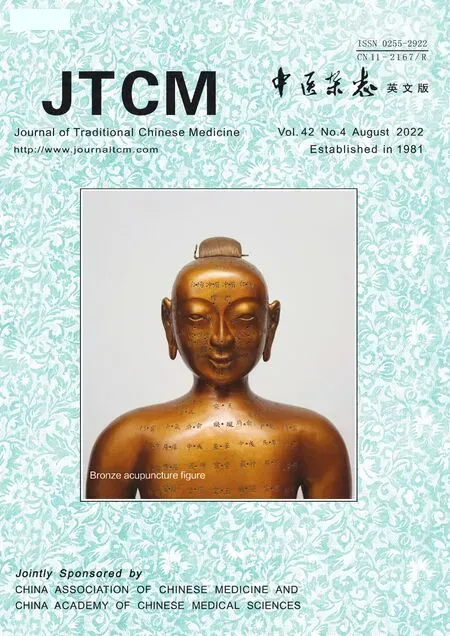 Journal of Traditional Chinese Medicine2022年4期
Journal of Traditional Chinese Medicine2022年4期
- Journal of Traditional Chinese Medicine的其它文章
- Editorial Board Listing
- Mixed methods research in complementary and alternative medicine:a scoping review
- Factors influencing physician's behavioral intention to use Traditional Chinese Medicine to treat coronavirus disease 2019 based on the theory of planned behavior
- Identification of novel biomarkers and therapeutic target candidates for stasis-heat symptom pattern of acute intracerebral hemorrhage by quantitative plasma proteomics
- Effect of three tongue needles acupoints Lianquan (CV23) and Hegu(LI4) combined with swallowing training on the quality of life of laryngeal cancer patients with dysphagia after surgery
- Effectiveness of auricular point acupressure with magnetic plate for pain management in acute postpartum cesarean section patients in Thammasat University Hospital:a randomized clinical controlled trial
